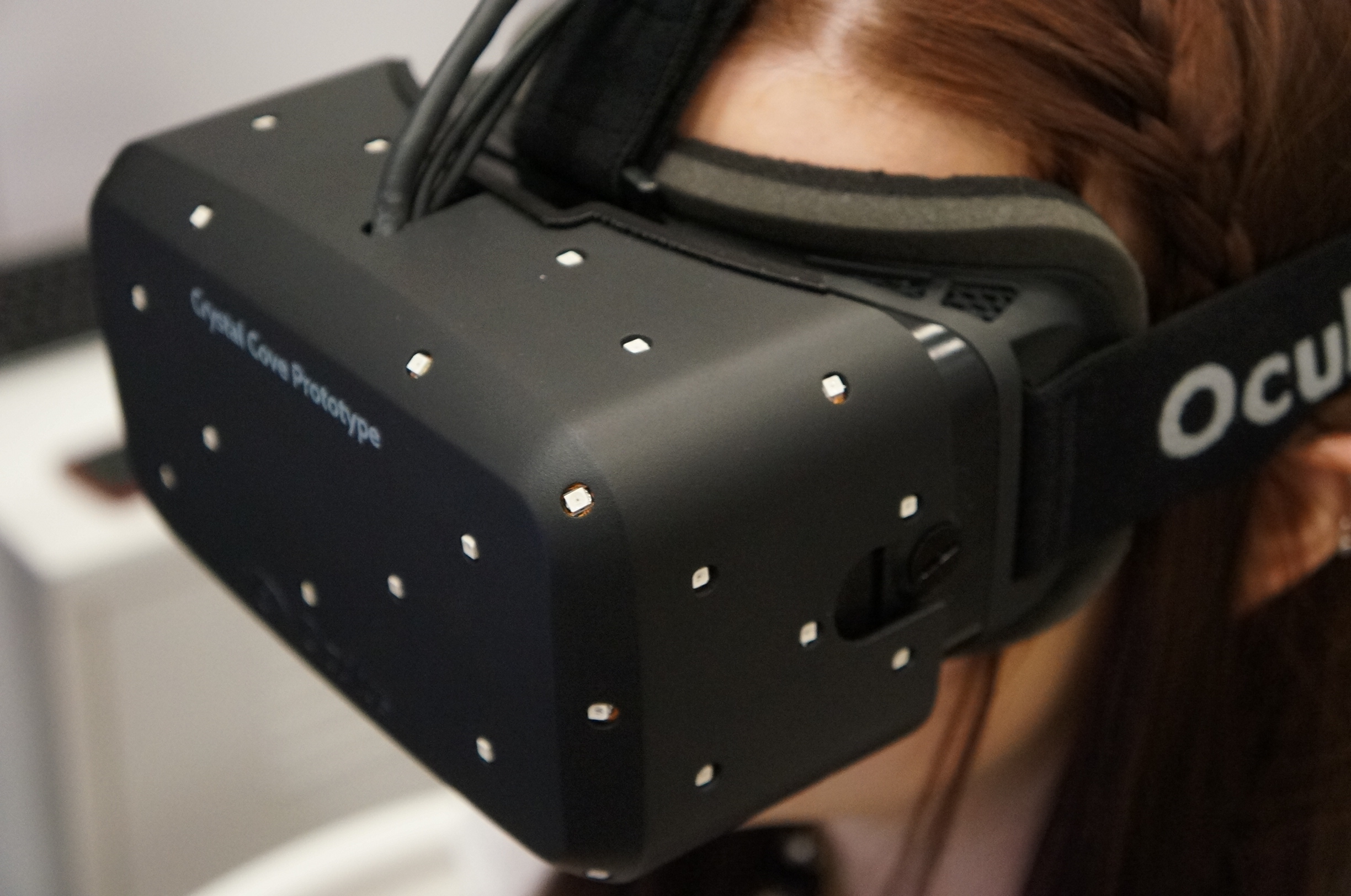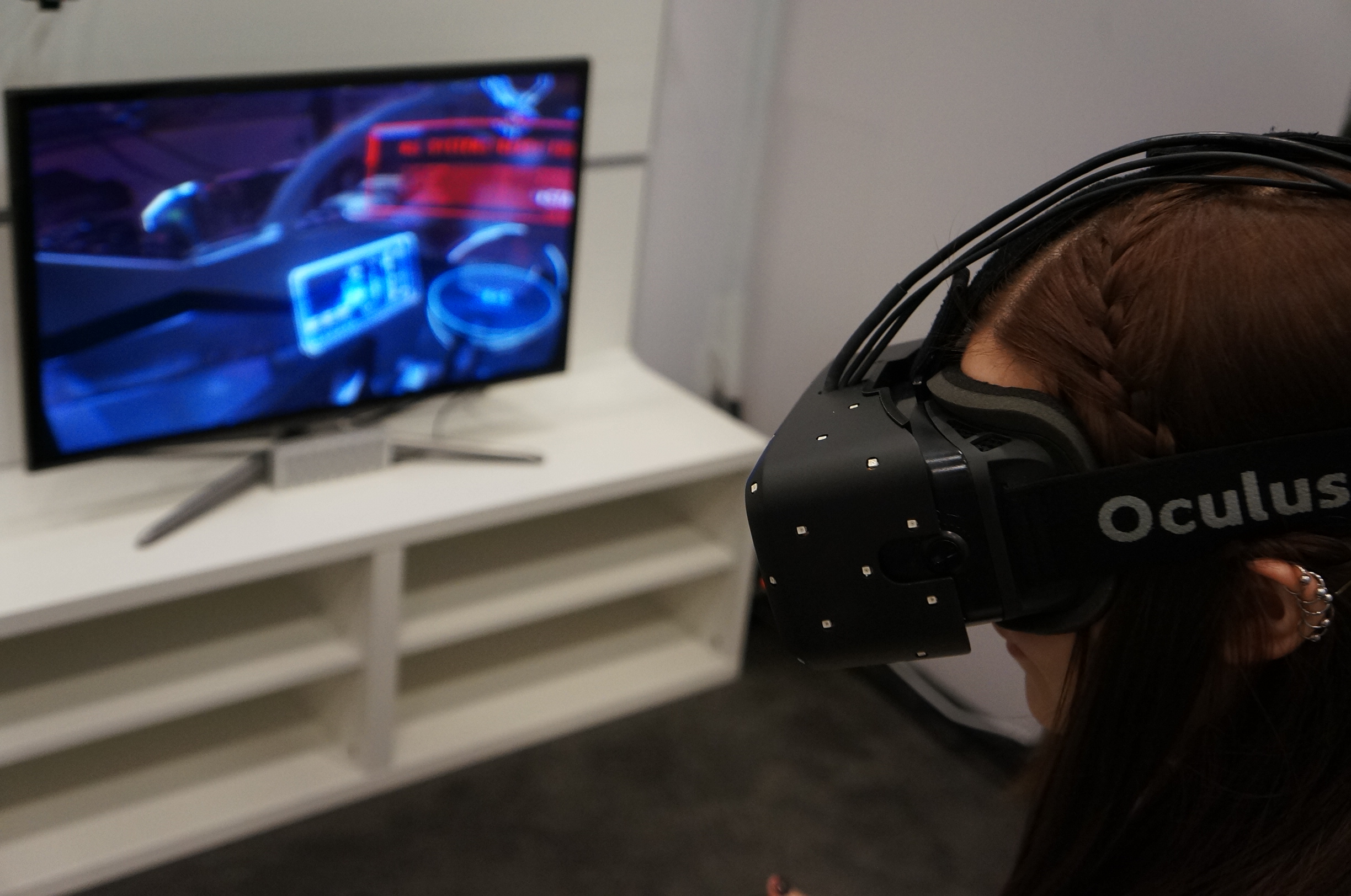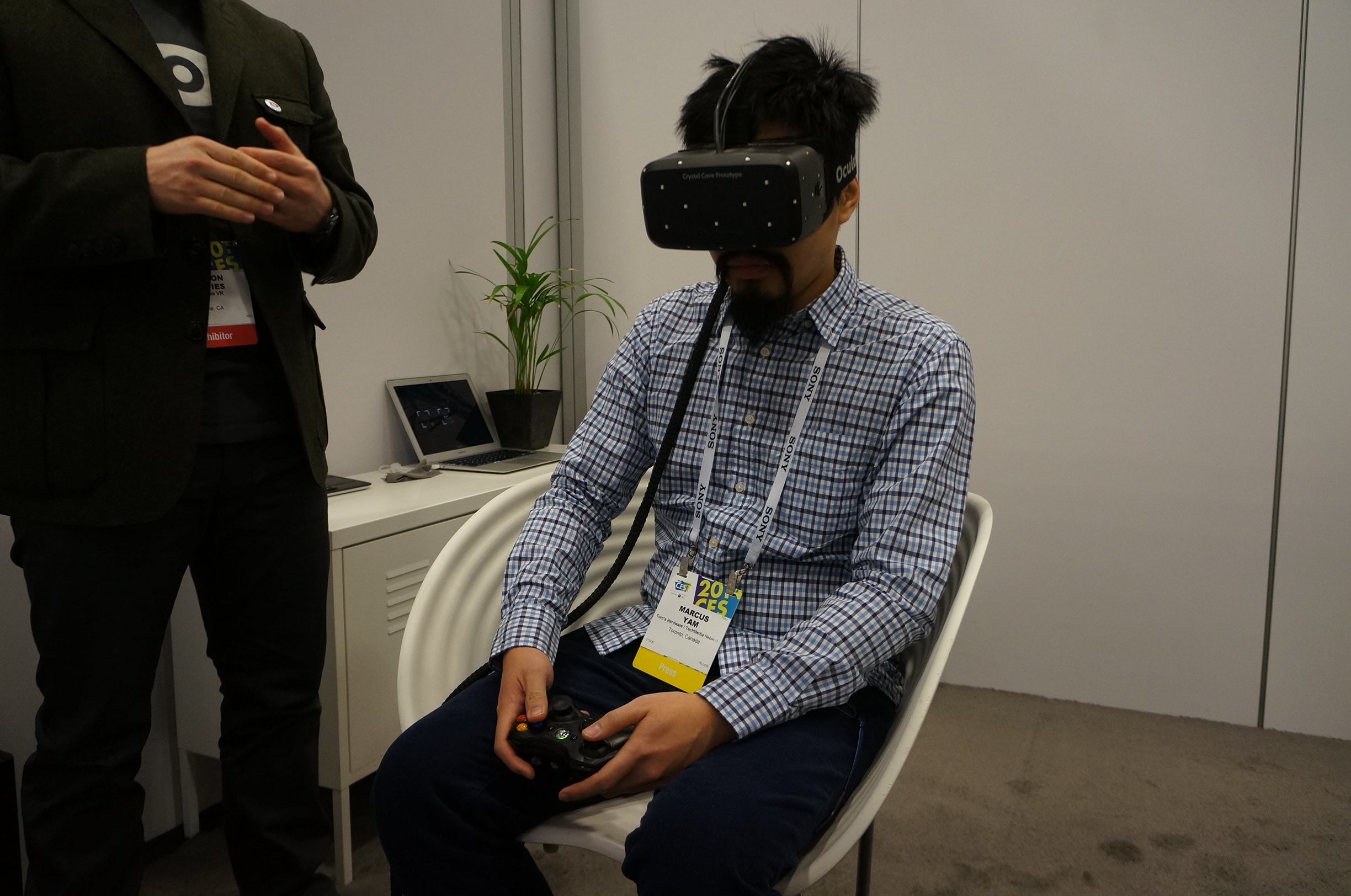Oculus Rift "Crystal Cove" Now Tracks Your Position, Packs Low Persistence OLED Displays
The new Oculus Rift has some major improvements.
One of our most anticipated visits of CES this year is Oculus VR. We're no strangers to the technology, but even after seeing the virtual reality technology several times now over the last year, it still feels new and cutting edge. That's largely due to consistent improvements every time that we get a chance to put our eyeballs into it. This showing at CES was no less impressive than when we saw it a year ago at CES 2013.
Although the development kits are easily obtainable, Oculus is showing its latest hardware innovations here in Las Vegas with its prototype named Crystal Cove. The new Oculus prototype now has positional tracking and an upgraded display.
Positional Tracking
Previous versions of the Oculus Rift tracked the X, Y, and Z movements of the user. That's perfectly fine if your head is mounted on a tripod, but it isn't. Rather, the motion and positioning of your head is also affected by your ability to lean back, forward, side to side, and even up and down. Crystal Cove is now able to capture that extra positional data through a camera mounted near the display that's able to read the exact position of the headgear. Given camera and sensor accessories from the Wii sensor bar to the Xbox One Kinect, we don't imagine that gamers will have any problem with the extra peripheral.
The result of positional tracking is pretty awesome. Epic Games provided a piece of demo software within its "Elemental" universe in a tabletop tower defense setup. We put the Oculus Rift on and we were suddenly sent off into this new virtual world, but unlike previous demos, we weren't able to walk or fly around. Instead, we were glued to our chairs, with movement being only where we could move our head. "Mouse look" was the same as ever, with us just pointing our heads where we wanted to look. To zoom in on certain details, though, all we had to do was physically lean for a closer look.
Positional tracking is good for more than just leaning into the scene. Oculus told us that the extra sensor data could be used by developers how ever they wish. For example, instead double tapping a movement key to dodge an attack, you simply just dodge with your body. Instead of using a button to peek around the corner, you simply just lean yourself.
Low Persistence
The next big technological advancement is low persistence, which relates to how quickly the displays refresh. The switch from LCD to OLED displays played a big role in doing away with the smearing or ghosting of objects. Crystal Cove now only displays updated frames to the user, as they are drawn by the GPU. The new hardware also has HD displays, but Oculus wouldn't share the exact resolution – sticking with just "HD." We suspect that it's in the neighborhood of 720p, as we could still the individual pixels, creating a "screen door" effect. Before the final consumer version, though, the Oculus team aims to go to higher resolutions and achieve even lower latency. Crystal Cove's latency is at around 30 ms, which is a huge improvement over the triple digit numbers from previous demos. The team is aiming to get that under the sub-20 ms range for the final model.
The next demo is EVE: Valkyrie, from the developers of EVE: Online. This comes from an early version of a real game that is being designed for the Oculus Rift itself. We put on Crystal Cove and we were inside the cockpit. Looking down, we could see our feet. Leaning back – something that didn't work in older hardware – we could see our legs and the rest of our lower torso. Neat. Then we launched and were dogfighting in space, and this is where the improvements in low persistence display was apparent. Reticle for missile lock would follow wherever we looked – without distracting motion blur. Everything looked crisp and clean, and it was incredibly immersive being able to pilot the aircraft and looking all around with your head to spot your enemy.
Get Tom's Hardware's best news and in-depth reviews, straight to your inbox.
We left the Oculus VR meeting room with smiles and anticipation for the final product. It's not often that we're happy to see the same unreleased technology at the same trade show year over year, but Oculus Rift impressed us with appreciable advancements and left us wanting one more than ever.
Check out all of our CES 2014 coverage!
Follow Marcus Yam @MarcusYam. Follow us @tomshardware, on Facebook and on Google+.
-
edogawa People look so stupid wearing those, lol.Reply
In all seriousness though, I really want to try an Oculus, they sound like they are getting/coming along well. -
elcentral love it, i hope they take the time to get it right the first time. i got 8hours in a sony vr and i did like it. but the 720p killed it, and some blurry linses made it a little worse. but i will own a set of rift for sureReply -
brisa117 Reply12396052 said:Wait, they went from 1080p HD prototype to back to 720p?! What gives!? =(
Well, technically it was a 1920*1080 screen divided between two eyes. So you were really getting 960*1080 for each eye (maximum). Then you have to consider the bubble effect those lenses have, so it's worse than 960*1080 because they don't want you to see the edge. Anyways, with the screen divided in half, they may go for a non-traditional resolution. So it's hard to say 1080P or 1440P or 720P.
My guess is that they have something special in store and that's why they're just saying "HD". -
David Dewis I'm hyped for this. The retail version can't come soon enough. This is the Immersion I've been craving for years. I just really hope they can keep the retail price where they are aiming as these new upgrades look expensive.Reply -
Andy McAdam I'd suspect the 720p comment was down to needing a lower latency display. It may be that the lower latency gave a better experience than the high resolution. Display technology is moving so fast right now though that six months from now we could well have a 4k OLED screen with low persistence and price tag to keep the Rift under $300.Reply
The head tracking is awsome and definitly required on the final product, but a big part of me hopes they merge with someone like Sixense and integrate STEM sensors into teh rift and then $300 gets you a Rift, or $400 gets you a rift with two STEM based hand controllers. -
cats_Paw If there is any product that hype might have merit around it is this.Reply
nVidia and AMD: Rebranding their old GPUS to sell more.
Game Developers: Almost no improvment in the last 5 years in games, milking CoD series, Crysis, Battlefield, etc (In the past a game that in singleplayer had under 8-10 hours of gameplay would be considered an insult).
Intel/AMD in CPUs: The mainstream is still 4 cores, since almost nothing uses more than that, not to mention that the last 3 generations are basicly the same.
Displays: 4K... Its nice but you need GPUs non existant now and the prices are insane, so... we still have to wait.
The Oculus is going to open a lot of posibilities... as long as they dont screw it up :D.






